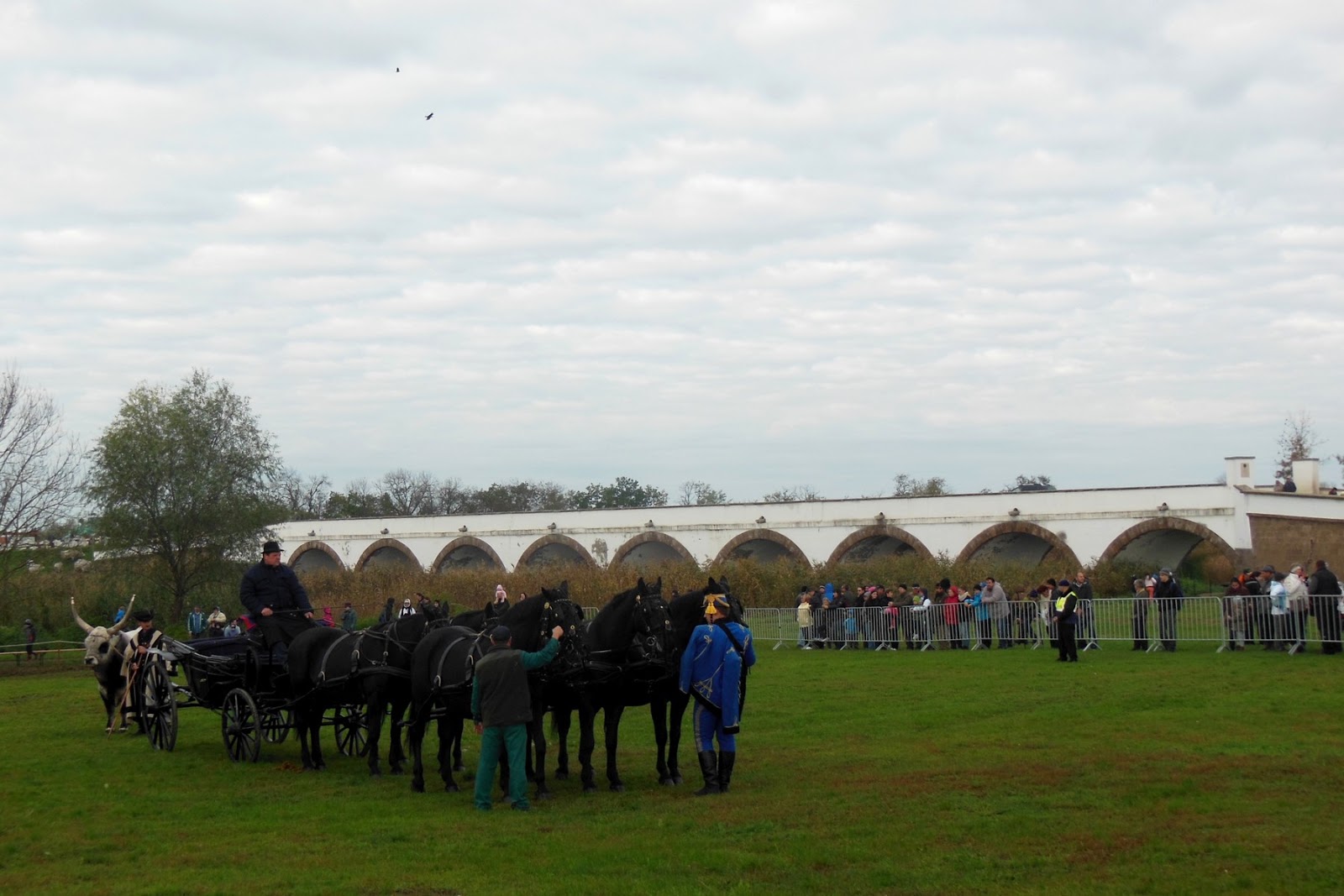When I visited Hortobágy National Park in October 2011 I immediately fell in love with puszta and their precious autumn guests. Tens of thousands of migrating Common Cranes use the steppe region of Hortobágy as a migration stop. They feed on mowed cornfields and night roost in the wetlands or local fishponds.
I didn't want to miss the great spectacle of migrating cranes this year as well. With friends, Erik and Zuzana, we spent a weekend in puszta, vast lowland area eastwards from Budapest. As it was their first visit there I wanted to show them my way of enjoying Hortobágy puszta in the autumn. It is a beautiful combination of local culture, traditions, amazing nature and last but not least, delicious local cuisine.
Instead of reading about it, check the photos from this weekend.
 |
| cloudy morning in the Hortobágy National Park |
 |
| muddy roads after Friday's rain |
 |
| Common Cranes (Grus grus) were feeding very close to our guesthouse |
 |
| visit in local animal breeds zoo |
 |
| typical sight in puszta - Hungarian longhorned grey cattle |
 |
| it was also St. Dömötör feast - great oportunity to spot all the local animals and their herdsmen |
 |
| herdsmen in colorful costumes |
 |
| horse carriage and famous nine-arch bridge behind |
 |
| on our way to fishponds - it's birdwatching time! |
 |
| instead of walk we chose narrow-gauge train |
 |
| Kondás fishpond from the watching tower |
 |
| one of the birdwatching hides |
 |
| it was early afternoon, so we spot only few Cranes, but there was plenty of geese, ducks and waders |
 |
| Curlew (Numenius arquata) |
 |
| Great Egret (Ardea alba) |
 |
| change of birding site - waiting for Cranes flying to their night roost site |
 |
| one of a few informations translated to English |
 |
| large cloud over puszta |
 |
| not an ordinary shed - Little Owl (Athene noctua) occupies its chimney |
 |
| delicious catfish stew - "Harcsa halászlé" |
 |
| traditional dessert - "Somlói galuska" |
 |
| in addition we visited Lake Tisza Ecocentre in Poroszló |
 |
| man can find here large freshwater aquarium |
 |
| fish swim over your head |
List of recorded bird species:
Mute Swan (Cygnus olor)
Greater White-fronted Goose (Anser albifrons)
Greylag Goose (Anser anser)
Eurasian Teal (Anas crecca)
Mallard (Anas platyrhynchos)
Northern Shoveler (Anas clypeata)
Common Pheasant (Phasianus colchicus)
Great Crested Grebe (Podiceps cristatus)
Grey Heron (Ardea cinerea)
Great Egret (Ardea alba)
Pygmy Cormorant (Microcarbo pygmeus)
Great Cormorant (Phalacrocorax carbo)
Western Marsh Harrier (Circus aeruginosus)
White-tailed Eagle (Haliaeetus albicilla)
Common Buzzard (Buteo buteo)
Common Kestrel (Falco tinnunculus)
Saker Falcon (Falco cherrug)
Water Rail (Rallus aquaticus)
Eurasian Coot (Fulica atra)
Common Crane (Grus grus)
Northern Lapwing (Vanellus vanellus)
Common Snipe (Gallinago gallinago)
Eurasian Curlew (Numenius arquata)
Black-headed Gull (Chroicocephalus ridibundus)
large Gull (Larus cachinnans/michahellis)
Feral Pigeon (Columba livia )
Eurasian Collared Dove (Streptopelia decaocto)
Little Owl (Athene noctua)
Great Spotted Woodpecker (Dendrocopos major)
Great Grey Shrike (Lanius excubitor)
Eurasian Magpie (Pica pica)
Western Jackdaw (Coloeus monedula)
Rook (Corvus frugilegus)
Hooded Crow (Corvus cornix)
Northern Raven (Corvus corax)
Great Tit (Parus major)
Bearded Reedling (Panurus biarmicus)
Crested Lark (Galerida cristata)
Common Starling (Sturnus vulgaris)
European Robin (Erithacus rubecula)
Black Redstart (Phoenicurus ochruros)
House Sparrow (Passer domesticus)
Eurasian Tree Sparrow (Passer montanus)
White Wagtail (Motacilla alba)
European Greenfinch (Chloris chloris)
European Goldfinch (Carduelis carduelis)
Yellowhammer (Emberiza citrinella)
Not enough? Watch my videos from this weekend:














